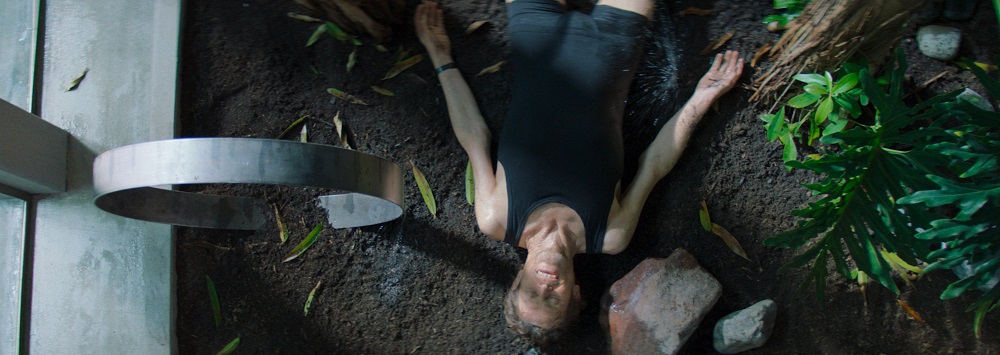
Art is Madness and Madness is Art as Dafoe Gets Locked Inside
Crack art thief Nemo (Willem Dafoe) has had jobs go south before, but never like this. While scouring the lavish Manhattan penthouse of an eccentric collector, the high-tech security system goes haywire. With this man out of the country, his compatriots in the crime cutting off communication, and all the doors and windows locked tight, Nemo is trapped. Worse, the water in the kitchen and in the bathroom has been turned off, there’s precious little food, and the heating system has gone into overdrive transforming the entire place into an oversize oven.
Inside is a single-location thriller about an ingenious man trying to utilize minimal available materials to escape an impossible situation. As simple as that may sound, director Vasilis Katsoupis (who also conceived the original story) and screenwriter Ben Hopkins have zero intention of making things anywhere near that straightforward. Nemo is mentally disintegrating, and escape can only be achieved through a combination of imagination, chaos, inspiration, and perseverance, and even then that may not be enough.
Making heads or tails out of any of this is no easy task. Katsoupis fills the penthouse with an armored truck’s worth of authentic, extremely valuable pieces of art of all makes and styles; from paintings to statues, figurines to tapestries. The place itself is a modern architectural marvel, but it’s also cold, heartless, and unforgiving. Its secrets only lead to new metaphorical terrors, while its two glass, stone, and steel levels conceal nothing yet reveal even less.
Once his partners turn off their radios, Nemo’s only link to the outside world is the security system feed broadcast over the giant television. He becomes fascinated with one of the maids (Eliza Stuyck), his eyes following her wherever she goes and he has long conversations with the woman that she will never hear. When she comes to vacuum the hallway outside the unit he furiously makes as much noise as possible, but the front door and the reinforced walls are too thick for the maid to hear the ruckus.
Another avenue for potential release comes in the form of an overhead skylight that hovers a good 30 to 40 feet above the central living room. Nemo uses his architectural and artistic background (which he speaks about in a hushed voiceover and may not be true) to construct a massive pyramid of tables, chairs, desks, bed frames, and other items to scale, his Sisyphean pursuit almost certain to lead to failure, if not serious injury.
But nothing is certain in Katsoupis’ thriller. Dafoe’s physical and psychological transformation mirrors the crumbling state of the penthouse. This bastion of luxury becomes a cell overflowing with filth. Yet it also remains a place of creativity. Carnage and chaos lead to the blossoming of profound revelation. Escape may be impossible, but art can come from anywhere, as one person’s trash can be another’s crowning achievement.
It’s a lot to deal with, and Katsoupis and Hopkins refuse to answer any of the questions they put up for discussion. The last images are purposefully vague, and the ephemeral nature of what Nemo is attempting is a cryptic conundrum that only grows in scope and size as hours become days, days become months, and time loses all meaning whatsoever. Inside is a perplexing descent into the unknown, and whether or not this madness is art (or the art is madness) is purely in the eye of the beholder.
Film Rating: 2½ (out of 4)








